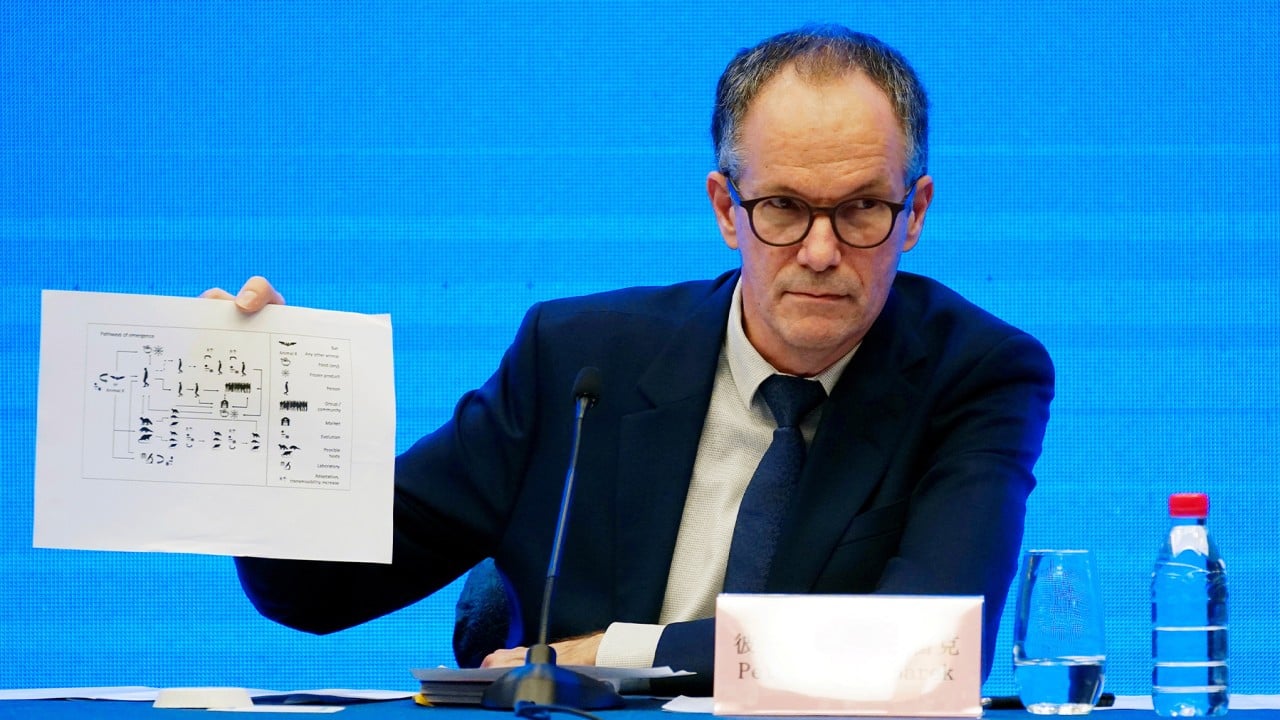
Coronavirus: new call for fresh look at natural and lab origin theories
- Two possibilities not given balanced consideration in WHO mission, 18 scientists say in public letter
- Researcher on WHO team says there is a complete lack of data pointing to a lab accident
In an open letter published in Science magazine on Friday, 18 prominent scientists said theories about both natural and laboratory spillovers of the novel coronavirus should be taken seriously until there was sufficient data.
“The two theories were not given balanced consideration,” the letter said, referring to the joint investigation.
The report of that mission, released in March, said the hypothesis of the virus originating in bats and spilling over to people through an intermediary animal host was “likely to very likely”, while a lab accident was “extremely unlikely”.

01:56
WHO ends Covid-19 mission in Wuhan, says lab leak ‘extremely unlikely’
Peter Daszak, president of NGO EcoHealth Alliance and a member of the joint investigation team, defended the mission’s work.
Daszak said the letter ignored a wealth of data supporting a “natural spillover” and a complete lack of data suggesting a lab accident.
“The goal of the WHO report is to prioritise the most important pathways for further investigation, based on known and gathered evidence. By failing to balance all this evidence, the letter fails in its critique of WHO,” Daszak wrote on Twitter on Friday.
Various countries including the United States, Britain, Australia and Canada have expressed concerns about the conditions in which the investigation was carried out and what data was available.
In March, WHO director general Tedros Adhanom Ghebreyesus said the lab leak theory was the least likely hypothesis but still needed further investigation.
The renewed call for a transparent investigation came ahead of this month’s World Health Assembly. At last year’s meeting, the assembly requested the WHO and partners determine the origins of Sars-CoV-2, the official name of the virus that causes Covid-19.

01:33
WHO mission leader on ‘political pressure’, difficulty accessing data during Wuhan origin study
Baric and Shi were part of a team that conducted “gain of function” research, which involves altering microbes to improve their transmissibility, virulence or other functions – alterations the Wuhan institute has been accused – without proof – of conducting.
Baric, Shi and their colleagues constructed a chimeric coronavirus that had elements of both a bat coronavirus identified by the institute and the virus that causes severe acute respiratory syndrome, a combination was able to infect human airway cells, according to a 2015 paper by the team.
Daszak has also worked with Shi in the past.
Scientists call for new probe into coronavirus origins – with or without China
Shi said the suspicions raised in the letter by Baric and others were misplaced and would damage the world’s ability to respond to pandemics, according to a report by the MIT Technology Review magazine.
“Who can provide evidence that does not exist?” Shi was quoted as saying. “The hypothesis of a lab leak is just based on the expertise of a lab which has long been working on bat coronaviruses which are phylogenetically related to Sars-CoV-2.”
“This kind of claim will definitely damage the reputation and enthusiasm of scientists who are dedicated to work on the novel animal viruses which have potential spillover risk to human populations and eventually weaken the ability of humans to prevent the next pandemic.”

01:20
WHO team sees data ‘no one has seen before’ during Covid-19 origin investigation in Wuhan, China
While scientists generally have supported another investigation that is independent and transparent, several, including infectious disease researcher Robert Garry from Tulane University and Georgetown University virologist Angela Rasmussen, have expressed doubts about the lab leak theory, according to media reports.
Microbiologist Kristian Andersen from Scripps Research said he supported the letter’s core message to investigate the origins of Covid-19, but he did not agree with the weight given to the lab leak theory.
“Unfortunately, the letter suggests a false equivalence between the lab escape and natural origin scenarios. To this day, no credible evidence has been presented to support the lab leak hypothesis, which remains grounded in speculation,” Andersen wrote on Twitter.
This was not the first time that scientists raised doubts about the China-WHO joint investigation.
In March, more than two dozen policy analysts and scientists wrote a letter saying the joint team did not have the mandate, independence and access to carry out a full and unrestricted investigation into all the relevant origin hypotheses.

